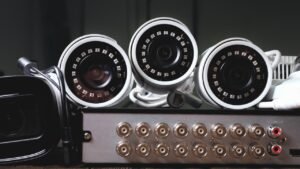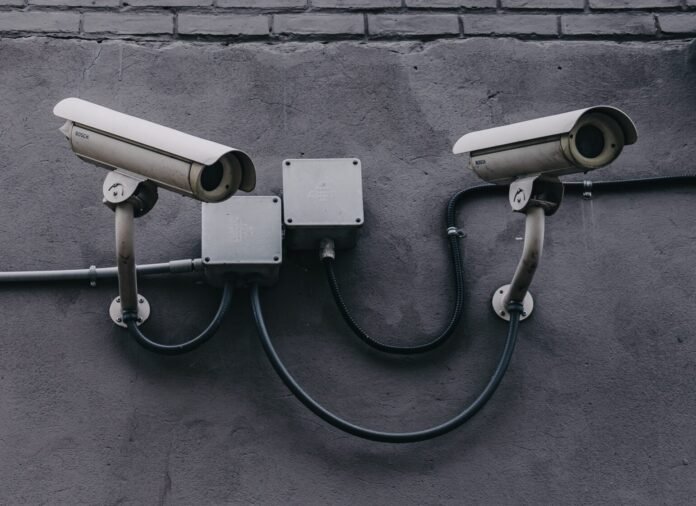Understanding CCTV Cameras: A Historical Perspective
Brief introduction of CCTV cameras:
CCTV stands for closed-circuit television and usually consists of a network of 4 or more cameras that are connected to a recording device and storage system to create a backup of the recordings. The History of CCTV Cameras began in the early 1930s with a German engineer.
Unveiling the Past and Present of CCTV Cameras
In today’s modern world, CCTV cameras have become an integral part of our daily lives. They serve as vigilant guardians, keeping an eye on our homes, businesses, and public spaces. However, the history of CCTV cameras is a fascinating journey that takes us back to their humble beginnings and traces their evolution into the sophisticated surveillance tools we rely on today.
What Are CCTV Cameras?
CCTV stands for Closed-Circuit Television, which essentially means a system of video cameras that transmit signals to a specific location or set of monitors. Unlike broadcast television, where signals are openly transmitted to multiple receivers, CCTV cameras are intended for private use and operate within a closed circuit.
Components of a CCTV System
To better understand CCTV cameras, let’s break down the key components of a typical CCTV system:

- Cameras: These are the primary devices that capture video footage. CCTV cameras come in various types, including dome, bullet, and PTZ (Pan-Tilt-Zoom), each with its own purpose and features.
- Recording Equipment: This includes Digital Video Recorders (DVRs) or Network Video Recorders (NVRs), which store and manage the recorded video data.
- Monitor or LCD: Monitor or LCD displays the live or recorded footage, allowing operators to monitor and review activities.
- Cabling: Cables connect cameras to the recording equipment and power sources.
- Power Supply: CCTV cameras require a power source to operate, usually through an electrical outlet or Power over Ethernet (PoE).

A Journey Through History
The Birth of CCTV Cameras
The concept of surveillance dates back centuries, but the first true CCTV system was invented in Germany by a German named as Walter Bruch and was first used back in 1942 in Germany to capture live video footage during the late 1930s. Engineer Walter Bruch developed a rudimentary system to monitor the launch of V-2 rockets. This early CCTV system used a combination of radio waves and wires to transmit video signals to a remote location.
CCTV Cameras Enter the Commercial Market
It wasn’t until the 1960s that CCTV cameras started to gain popularity in commercial and public spaces. These early systems were bulky and expensive, limiting their use to government facilities, banks, and high-security areas.
Advancements in Technology
The late 20th century brought significant advancements in technology, leading to the transition from analog to digital CCTV cameras. This shift allowed for higher resolution, better image quality, and remote access to video feeds.
Today’s CCTV cameras are a testament to innovation. They come equipped with an array of features, including:
- High-Definition Resolution: Crystal-clear images and video recordings.
- Motion Detection: Cameras can detect motion and send alerts to the operator.
- Night Vision: Infrared technology enables cameras to capture footage in low-light conditions.
- Remote Monitoring: Access video feeds from anywhere using smartphones or computers.
- Smart Integration: Integration with other security systems and devices like alarms and access control systems.

The Future of CCTV Cameras
As technology continues to evolve, so will CCTV cameras. The future promises even more advanced features, such as:
- Artificial Intelligence (AI): AI-powered cameras can recognize objects, people, and anomalies, enhancing security and efficiency.
- 4K and Beyond: Higher resolutions for even sharper images and more detailed recordings.
- Wireless Connectivity: Eliminating the need for extensive cabling.
Conclusion
In conclusion, CCTV cameras have come a long way since their inception in the 1930s. They have evolved from rudimentary systems to sophisticated, AI-powered surveillance tools. Understanding the history and technology behind CCTV cameras is essential for making informed choices in security and surveillance. As we look to the future, it’s exciting to envision the continued advancements in CCTV camera technology, ensuring our safety and security in an ever-changing world.
Feel free to reach out to us at CCTV Guides for any further inquiries or assistance regarding CCTV cameras and their usage.


[…] You may also like History of CCTV Cameras […]